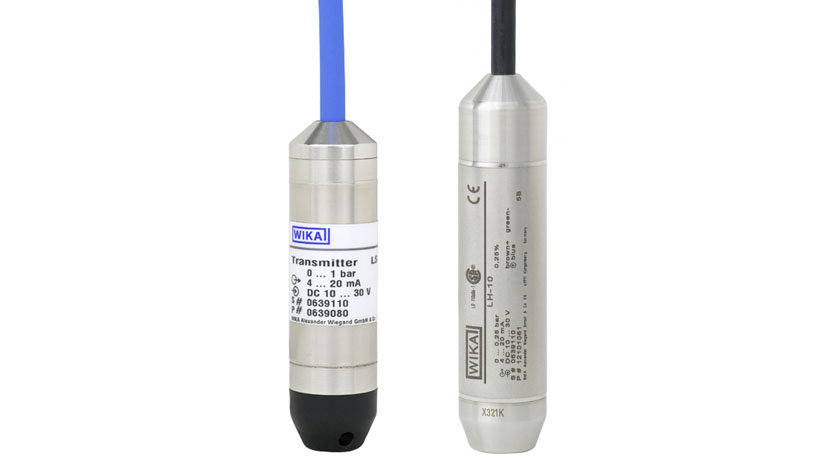
The submersible pressure transmitter, sometimes also referred to as a level probe, is a special type of pressure sensor used for level measurements in e.g. tanks, wells, shafts and bore holes.
For level measurements, the level probe is submersed directly into the medium and directed as close as possible towards the bottom of the tank/vessel or shaft/bore hole. The level probe measures the hydrostatic pressure which makes it possible to draw conclusions regarding the current level, i.e. the height of the liquid column above. Practically this takes place by “submersing” the probe at its connecting cable. The application is therefore quite easy.
The most important quality features are the resistance and tightness of the level probe or the connecting cable to the media as well as to the the prevailing pressure and the mechanical stress of the body and the cable.
Note
Further information on submersible pressure sensors can be found on the WIKA website. Would you like to buy submersible pressure sensors? In our WIKA online shop you’ll find some of our standard versions. If you have any questions, your contact will gladly help you.
Also read our posts
The design of a submersible pressure transmitter / level probe – Part 1
The design of a submersible pressure transmitter / level probe – Part 2
Effects of temperature-related density changes on hydrostatic level measurement
Grounding of hydrostatic level sensors
How does lightning protection in hydrostatic level sensors work
What is meant by hydrostatic level measurement or hydrostatic pressure?
What advantages does a cable box have for submersible pressure sensors?
Please find further information on this topic on our microsite “Hydrostatic level measurement” 

